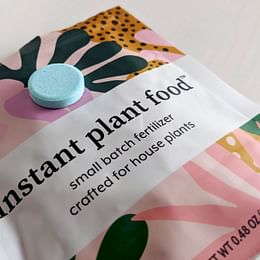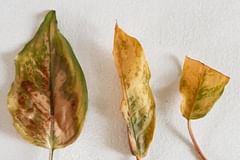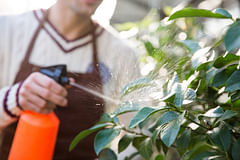What to do when your plant's leaves turn yellow in Autumn/Fall
Worried about yellow leaves on your houseplants this fall? Learn what's normal, how to spot problems, and get easy tips to keep your plants healthy and happy through autumn. Perfect for beginners!
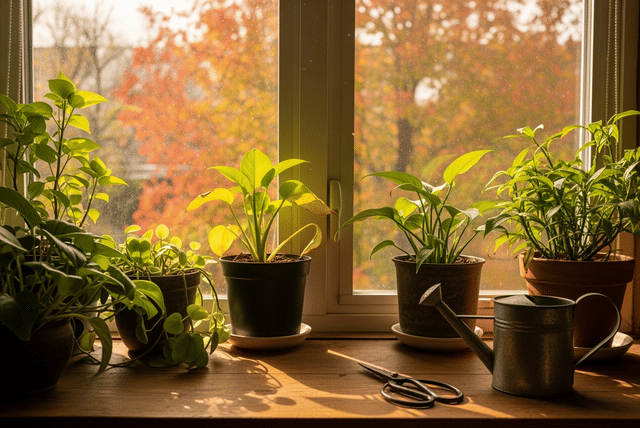
It's that time of year again. The days get shorter, the air turns colder, and suddenly, you notice your favorite houseplant's leaves turning yellow. Don't worry! This is one of the most common plant questions I get every fall.
Let's break down what's normal, what's not, and how to keep your plants happy and healthy as the seasons change.
- Why are my plant's leaves turning yellow in fall?
- Seasonal leaf drop (your plant is completely fine)
- Overwatering
- Lighting changes
- Temperature changes
- How do you know if it's a problem or just seasonal change?
- Simple steps to help your plant recover from yellowing leaves
- Yellow leaf myth: You should water your plant more in the fall
Fall can be quite scary, because even with your best efforts, your plants will stop growing. This is one of the most difficult parts of fall and winter as a plant owner. But that doesn't mean you're not caring for your plant correctly, it's just going dormant for the darker and colder days.
Why are my plant's leaves turning yellow in fall?
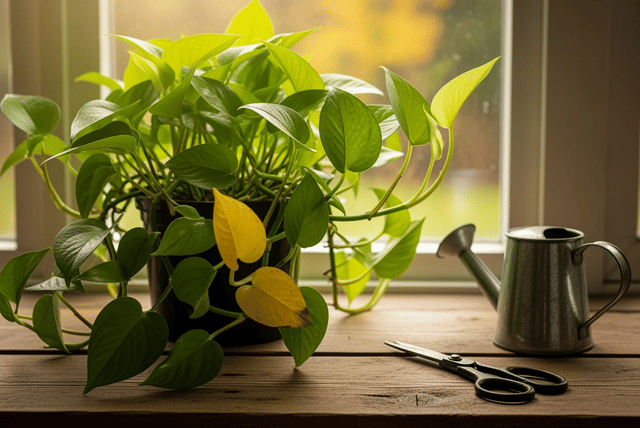
Your first gut-feeling when you see yellow leaves on your plant will be to want to give it more care. Before you do anything, let's go through a simple checklist. Yellow leaves don’t always mean disaster. Autumn is a time of transition for both outdoor and indoor plants.
Here's what might be happening:
Seasonal leaf drop (your plant is completely fine)
Many plants naturally drop some of their older leaves in the fall as they prepare for slower growth. This helps the plant to preserve energy for the winter months. If you see a few yellow leaves at the bottom of your plant, but the rest of the plant looks healthy, it's probably just a normal seasonal change.
Overwatering
In the fall, there is much less sunlight as there was in the spring and summer. Because of this, your plant will respond by slowing going dormant: It's "sleeping". When it's in this state, it uses a lot less energy, and less water. This is also why it doesn't really grow.
Most beginning plant owners, myself included, don't pick up on this right away and will keep watering their plants as they have been in the spring and summer. But your plant doesn't need that much water anymore, so what happens? You'll accidentally overwater your plants.
This overwatering causes root rot, and your plant's leaves will turn yellow and a little mushy.
So what can you do? Always check the soil before you water your plant. Is it still moist? Wait a few more days and check again. It's very important to let the soil mostly dry out in the fall and winter to avoid overwatering your plant.
Lighting changes
In the fall, when it's darker outside, your plants might struggle with photosynthesis. This can lead to weaker and yellowing leaves. There is an easy fix: Move your plants closer to the window, where it can get more light. You can also use a grow light.
Temperature changes
And last but not least, temperature changes can play a big role in causing yellow leaves in the fall/autumn. If you have any drafts from open or poorly-insulated windows, your plant can get stressed from the temperature changes. This leads to yellowing leaves or the dropping of the leaves, because the plant is going into survival mode and wants to preserve energy.
So if you have any of these drafts, make sure to keep your plants away from them.
How do you know if it's a problem or just seasonal change?
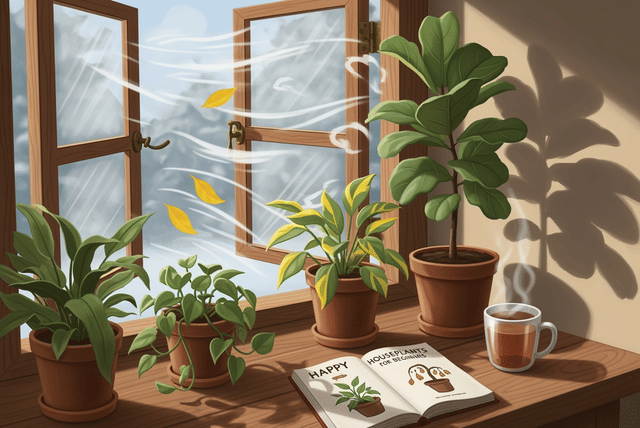
If there are a few yellow leaves at the bottom of the plant, especially some of the older leaves, with new growth still green and healthy, there is nothing to worry about. This is normal seasonal behavior on your plant.
However, if you see quick yellowing leaves all over your plant, mushy stems, or a bad smell from the soil, it usually means overwatering or root rot.
In case you're dealing with root rot, remind yourself of this checklist:
- Is the yellowing only on old leaves? (Normal)
- Are you watering less than in summer? (If not, you should water your plant less)
- Is your plant getting enough light? (Move it closer to a window)
- Is the pot draining well, or is water pooling at the bottom? (Standing water is bad)
By answering these questions, you'll find out quick quickly what the problem with your plant could be. Once you know the problem, you'll want to take some steps to help your plant recover.
Luckily, you can still take a few steps to get your plant back to health.
Simple steps to help your plant recover from yellowing leaves
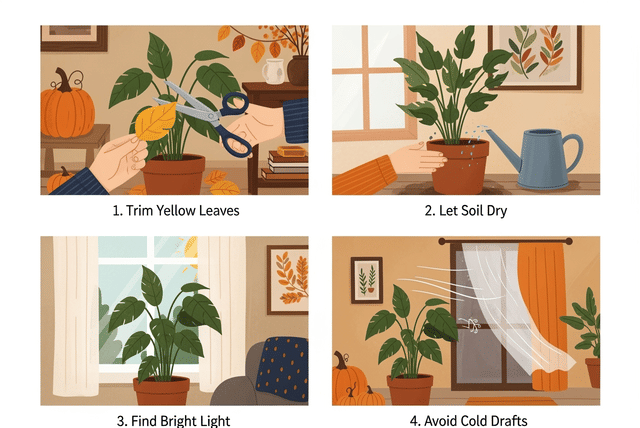
- Remove yellow leaves with clean scissors: this helps to prevent pests.
- Let the soil dry out before watering again.
- Move it to a brighter spot if possible, direct sunlight is usually fine in the fall and winter.
- Check for cold drafts and keep your plant away from them.
In case you're looking for some more information, you can always take a look at "How do you recognize root rot on your houseplant?" or "How to rescue a plant from overwatering".
Yellow leaf myth: You should water your plant more in the fall
Incorrect! This is one of the biggest plant care myths. Most plants need less water in fall and winter, not more. Daily watering is almost never necessary (and can do more harm than good). Always check the soil first, and remember: it’s better to underwater than overwater during the cooler months.
Thank you for reading this post! I hope it helps you to keep your plants healthy and beautiful! If you're looking for more guides on specific plants, you can always request a plant guide to get a guide for the plant you have trouble with.

